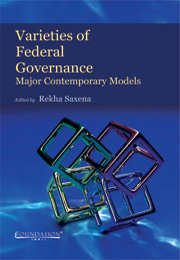Book contents
- Frontmatter
- Contents
- List of Contributors
- Foreword
- Acknowledgements
- Introduction
- I Theoretical and Comparative Dimensions
- II Presidential Federal Systems
- 3 Political Coercion and Administrative Cooperation in U.S. Intergovernmental Relations
- 4 What Makes the Swiss Multicultural Federalism Work
- 5 Local Governments in the Brazilian Federation
- 6 Russian Federalism: Does it Work?
- 7 Federalism in Pakistan
- III Commonwealth Parliamentary Federations
- IV Non-Commonwealth Parliamentary Federations in Afro-Asia
- V European Parliamentary Federations
- VI Devolutionary Systems
- VII Supranational Confederalism/Federalism?
5 - Local Governments in the Brazilian Federation
from II - Presidential Federal Systems
Published online by Cambridge University Press: 05 June 2012
- Frontmatter
- Contents
- List of Contributors
- Foreword
- Acknowledgements
- Introduction
- I Theoretical and Comparative Dimensions
- II Presidential Federal Systems
- 3 Political Coercion and Administrative Cooperation in U.S. Intergovernmental Relations
- 4 What Makes the Swiss Multicultural Federalism Work
- 5 Local Governments in the Brazilian Federation
- 6 Russian Federalism: Does it Work?
- 7 Federalism in Pakistan
- III Commonwealth Parliamentary Federations
- IV Non-Commonwealth Parliamentary Federations in Afro-Asia
- V European Parliamentary Federations
- VI Devolutionary Systems
- VII Supranational Confederalism/Federalism?
Summary
Introduction
The 1988 Constitution brought important changes for the Brazilian federation and the sub-national finances. Tax powers of states and municipalities increased at the same time their share on the main federal taxes more than doubled in relation to the previous Constitution, with no conditions attached to the use of these resources (except elementary education), whereas access to credit became subjected on approval by the federal Senate, only. Therefore, sub-national governments got autonomy to manage their own businesses.
However, over time this situation changed. Much of the gains began to reverse first slowly, then at a faster speed. Federal government regained its previous position in the division of the fiscal pie, at the expense mainly of the states. Municipalities were able to sustain their gains, but the impossibility of reaching agreement for changing the revenue sharing apportionment formula, together with mounting constraints to the use of local resources, led to great horizontal inequalities that impinged on the efficacy of policies carried out at the local level.
From the mid-nineties, fiscal policy became subjected to the macroeconomic goals of monetary stabilization. Being elected as the cornerstone of the macroeconomic stabilization plan, the fiscal adjustment carried out in the second half of the nineties brought a huge increase in the overall tax burden to redress past deficits in the public accounts and generate enough surplus to keep the rate of public indebtedness to the GDP at bay.
- Type
- Chapter
- Information
- Varieties of Federal GovernanceMajor Contemporary Models, pp. 69 - 85Publisher: Foundation BooksPrint publication year: 2011



